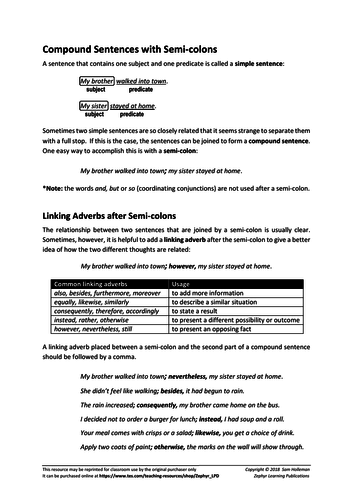




Fully resourced lesson that teaches students how to use semi-colons to combine simple sentences into compound sentences. It also teaches them about conjunctive/linking adverbs (e.g. ‘however,’ ‘besides,’ ‘likewise,’ ‘consequently,’ ‘instead,’ etc.) and how they can be added immediately after semi-colons to clarify meaning.
Resources include printable explanations and practice exercises along with a Powerpoint presentation that can be used to guide students through the lesson (the Powerpoint includes the answers for the exercises on the worksheet).
Get this resource as part of a bundle and save up to 35%
A bundle is a package of resources grouped together to teach a particular topic, or a series of lessons, in one place.
Something went wrong, please try again later.
Really helping to improve my students' sentence variety. Great resource!
Report this resourceto let us know if it violates our terms and conditions.
Our customer service team will review your report and will be in touch.